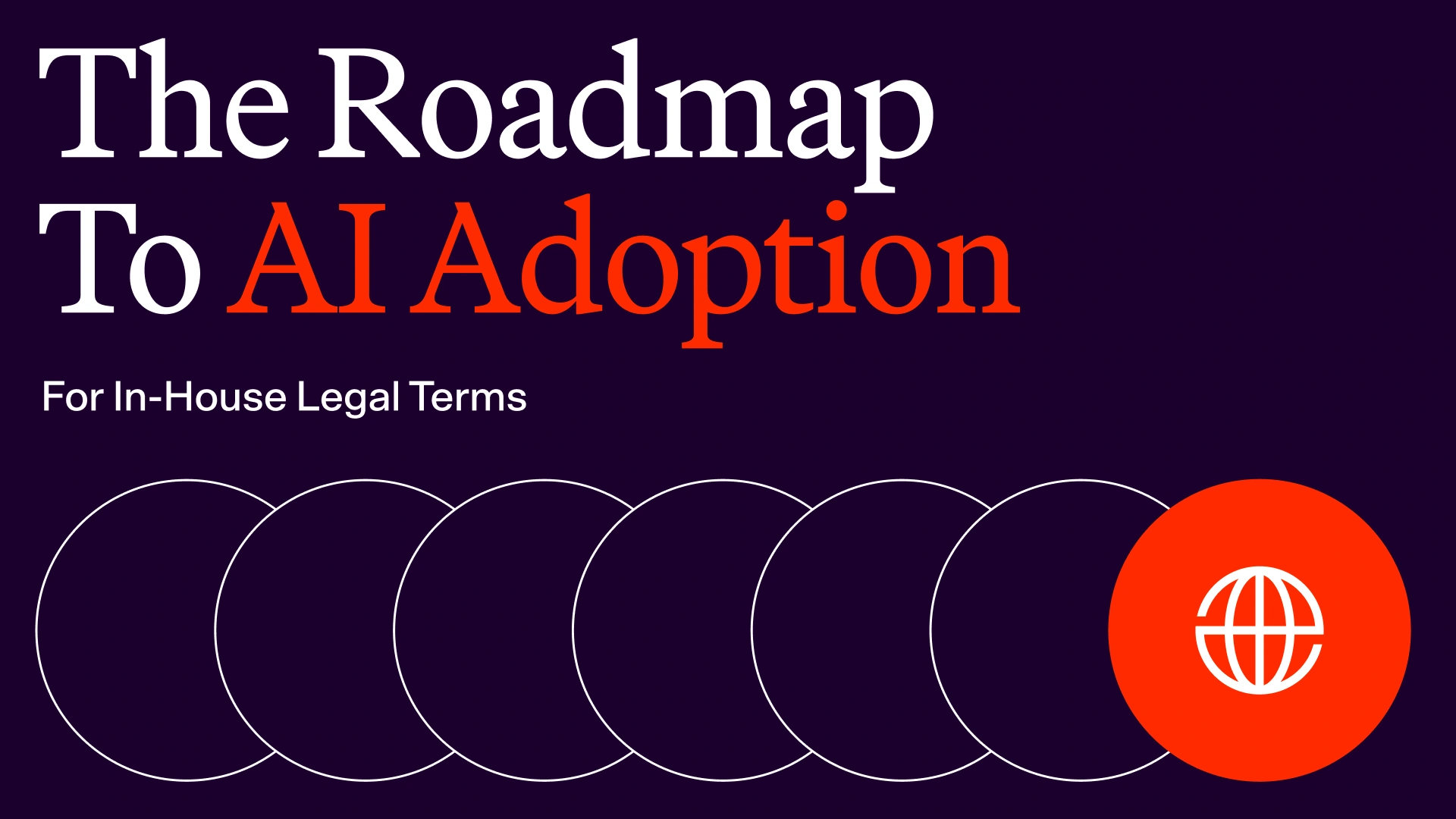AI Review for Distribution Agreements
What is a Distribution Agreement?
A Distribution Agreement (DIS) is a legal contract between a supplier or manufacturer and a distributor that outlines the terms and conditions for the distributor to sell or distribute the supplier's goods or products. The agreement typically defines the rights and responsibilities of both the distributor and the supplier or manufacturer, including payment terms, territories, duration, performance expectations, and termination conditions. By having a well-drafted distribution agreement, both parties can ensure that there is a mutual understanding of key aspects of the agreement.
Distribution agreements are widely used across various industries to streamline the process of getting products or services from manufacturers to end-users. Some of the industries where distribution agreements are commonly utilized include:
- Consumer Goods
- Food and Beverage
- Pharmaceuticals
- Automotive
- Technology and Software
- Publishing
- Consumer Electronics
- Fashion and Apparel
Why Use a Distribution Agreement?
There are several key reasons why businesses should use Distribution Agreements:
- Protection of Interests: An important aspect of a distribution agreement is the protection it offers to the parties involved. For suppliers, it safeguards their interests by stipulating how their products should be marketed and sold, and may include clauses that protect their intellectual property and brand reputation. For distributors, the agreement provides security by defining the scope of their exclusivity, territory rights, and guaranteeing a certain level of support from the supplier. This balance ensures that both parties' interests are protected, encouraging a more trusting and beneficial relationship.
- Performance Standards and Benchmarks: A well-structured distribution agreement also sets clear performance standards and benchmarks. This includes stipulations regarding sales targets, inventory levels, marketing efforts, and other key performance indicators. By setting these standards, the supplier can ensure that their products are being effectively marketed and distributed, while the distributor has clear goals and objectives to strive towards. This not only helps in measuring the success of the distribution but also in making necessary adjustments for continuous improvement.
- Adaptability to Change: A distribution agreement is important as it provides a structure for handling future changes in the business environment. This may include provisions for renegotiating terms in response to market changes, modifying distribution territories, or updating pricing structures. Such flexibility allows both parties to adapt to evolving market conditions, technological advancements, or changes in consumer demand, ensuring the long-term viability and success of their partnership.
What Should Be Included in a Distribution Agreement?
The top provisions to consider in a Distribution Agreement are:
- Scope of Distribution Rights: This provision is fundamental as it defines the breadth and limitations of the rights granted to the distributor. It should clearly specify whether the distribution rights are exclusive or non-exclusive, the geographical territory covered, and any specific products or services included in the agreement. This clarity is essential to prevent overlap and conflicts with other distributors and to ensure both parties have a mutual understanding of where and how the products or services can be distributed. Exclusive rights can be particularly valuable to a distributor and, as such, might come with additional obligations.
- Terms of Sale and Pricing: This section governs the financial aspects of the distribution agreement and is crucial for ensuring economic viability and clarity. It should detail the pricing structure, payment terms, and any discounts or incentives offered. This may also include minimum purchase requirements or sales targets for the distributor. It's important because it directly impacts the profitability for both the distributor and the supplier. Clear terms help in avoiding disputes over payments and ensure that both parties have aligned expectations regarding revenue and sales volume.
- Termination and Renewal Terms: This provision is critical as it outlines how the agreement can be terminated or renewed. It should specify the duration of the agreement, the conditions under which either party can terminate the agreement (e.g., breach of contract, insolvency), and the process for renewal. This is important because it provides both parties with an understanding of the commitment they are making and the circumstances under which the relationship can be ended. It also helps in planning and stability for both parties as they can anticipate the potential end or continuation of their business relationship.
In addition to these top provisions, a comprehensive Distribution Agreement should also include:
- Supplier's Obligations: This section should outline the responsibilities of the supplier, such as providing product information, marketing support, training, and timely delivery of products.
- Distributor's Obligations: Similarly, the agreement should clearly state the distributor's responsibilities, such as maintaining adequate inventory, providing customer service, and adhering to the supplier's marketing and branding guidelines.
- Intellectual Property Rights: The agreement should address the use of the supplier's trademarks, patents, and other intellectual property. It should specify how the distributor can use these assets and any limitations on their use.
- Confidentiality: A confidentiality clause is essential to protect sensitive business information shared between the parties, such as customer lists, pricing strategies, and product development plans.
- Indemnification: This provision allocates the risk of third-party claims between the parties. It typically requires each party to indemnify the other for claims arising from their own negligence or breach of the agreement.
- Dispute Resolution: The agreement should specify how disputes between the parties will be resolved, such as through mediation, arbitration, or litigation. It should also state which jurisdiction's laws will govern the agreement.
- Force Majeure: This clause excuses a party's performance under the agreement when certain unforeseen events occur, such as natural disasters, wars, or government actions.
Checklist for a Good Distribution Agreement
To ensure that your Distribution Agreement is effective, comprehensive, and legally sound, use this checklist:
- Clearly define the scope of distribution rights
- Specify whether the rights are exclusive or non-exclusive
- Delineate the geographical territory
- List the specific products or services included
- Detail the terms of sale and pricing
- Include payment terms and any discounts or incentives
- Specify the duration of the agreement
- Outline the conditions for termination and renewal
- Define the obligations of both the supplier and distributor
- Address the use of intellectual property
- Include a confidentiality clause
- Specify indemnification responsibilities
- Outline the dispute resolution process
- Include a force majeure clause
- Ensure the agreement complies with relevant laws and regulations
- Have the agreement reviewed by legal counsel
- Ensure the agreement is signed by authorized representatives of both parties
AI Contract Review for Distribution Agreements
To give you a sense for the benefits of leveraging contract review ai trained by lawyers, we’ve selected some sample language our software presents to customers during a review. Keep in mind that these are static in this overview, but dynamic in our software - meaning our AI identifies the key issues and proactively surfaces alerts based on importance level and position (company, 3rd party, or neutral) and provides suggested revisions that mimic the style of the contract and align with party names and defined terms.
These samples represent less than 5% of the pre-built, pre-trained Legal AI Contract Review solution for Distribution Agreements. If you’d like to see more, we invite you to book a demo.
APPOINTMENT OF DISTRIBUTOR
For: Distributor
Alert: May be missing an article regarding the appointment of a distributor.
Guidance: In a distribution agreement, it is essential to clearly outline the appointment of a distributor, their rights, obligations, and responsibilities. This clarity helps to minimize potential disputes and misunderstandings between the parties involved, streamlining the distribution process and reducing legal risks.
For instance, a seller of electronic devices looking to expand its market presence in the U.S. should include a clause in the distribution agreement that defines the distributor's role. This ensures that the distributor is aware of their responsibilities, such as promoting and selling the devices, providing after-sales support, and maintaining an adequate inventory.
Relevant laws to consider in this context include the UCC, which governs commercial transactions in the U.S., and any state-specific laws that may apply to the distribution of goods. Adhering to these laws and regulations ensures that the distribution agreement is legally compliant and enforceable.
Sample Language:
APPOINTMENT OF DISTRIBUTOR
[Exclusive]
1. Subject to the terms and conditions herein, the SELLER hereby appoints the DISTRIBUTOR as an exclusive DISTRIBUTOR for distributing the Products (defined below) during the Term (defined below).
2. The DISTRIBUTOR shall sell the Products only in [●●] (the “Territory”).
3. The SELLER shall not sell any Products during the Term in the Territory without the prior consent of the DISTRIBUTOR.
[Non-Exclusive]
1. Subject to the terms and conditions herein, the SELLER hereby appoints the DISTRIBUTOR as a non-exclusive DISTRIBUTOR for distributing the Product (defined below) during the Term (defined below).
2. The DISTRIBUTOR shall sell the Products only in [●●] (the “Territory”).
PURCHASE ORDER
For: Seller
Alert: May be missing an article regarding the purchase order process.
Guidance: Incorporating a well-defined purchase order process in a distribution agreement is crucial for ensuring smooth operations and preventing potential disputes between the parties involved. By including a specific article outlining the purchase order process, both parties can better comprehend their respective roles and responsibilities, leading to a more successful business relationship.
For example, when a distributor receives a large purchase order from a customer, a clear purchase order process allows for quick and accurate processing, timely delivery, and increased customer satisfaction. This ultimately results in repeat business and a stronger partnership between the parties.
While there might not be specific statutes governing the purchase order process in a distribution agreement, general contract law principles and relevant industry-specific regulations should be considered. Compliance with all applicable laws and regulations can protect the parties from potential legal disputes and liabilities.
In the U.S., the primary legal principle governing distribution agreements is the UCC, specifically Article 2, which deals with the sale of goods. The most significant exception, specific regulation, or doctrine that applies to this principle is the ""battle of the forms"" doctrine, which addresses situations where parties exchange conflicting or inconsistent forms during the negotiation and formation of a distribution agreement. Understanding these principles and exceptions is crucial for businesses engaged in the sale and distribution of goods within the U.S.
Sample Language:
PURCHASE ORDER
1. All Products shall be ordered by submission of written purchase orders from the DISTRIBUTOR to the SELLER (each, a “Purchase Order”) via [●●]. A Purchase Order shall include the following information:
Name of the Products;
Quantity of the Products;
Price for the Products;
Delivery location;
Delivery date; and
any other material information for the transaction regarding the Products.
2. No Purchase Order shall be binding upon the SELLER until the SELLER accepts the Purchase Order.
3. If the SELLER fails to accept a Purchase Order within [●●] of receipt of such Purchase Order, it shall be deemed that the SELLER has rejected such Purchase Order.
4. Any additional or conflicting terms and conditions that may be printed on any acceptances issued by the SELLER shall have no force or effect between the Parties unless mutually agreed by the Parties in writing.
5. The DISTRIBUTOR may not amend the Purchase Orders without the SELLER’s prior written consent after sending such Purchase Orders to the SELLER.
TERMINATION
For: Both
Alert: May be missing an article detailing termination procedures.
Guidance: To protect the interests of both parties in a distribution agreement, it is essential to define clear termination procedures. This involves including a specific clause outlining the rights and obligations of each party upon termination, which helps minimize potential disputes and misunderstandings.
A well-structured termination procedure is particularly advantageous in situations where a distributor fails to meet sales targets or breaches the agreement's terms. In such cases, a legally compliant termination process safeguards the interests of the parties involved and aids in dispute avoidance.
To ensure compliance with applicable laws, parties should consider the UCC and any state-specific laws governing contracts and distribution agreements. These laws offer guidance on notice periods, grounds for termination, and other aspects of the termination process.
It is also crucial to be aware of exceptions and specific regulations, such as antitrust laws like the Sherman Antitrust Act and the Clayton Act. These laws aim to prevent anti-competitive practices and may limit the parties' ability to include certain provisions in the termination procedures. For example, a termination provision that restricts a distributor from dealing with competing products post-termination may be considered a violation of antitrust laws.
Sample Language:
TERMINATION
Either Party may immediately terminate this Agreement by giving written notice to the other Party if any of the following event occurs:
(a) in the event that the other Party has breached any of its obligations set forth in this Agreement and has failed to cure such breach within [●●] days after the non-breaching Party issued a notice to cure the breach;
(b) in the event that the other Party has breached any of its material obligations set forth in this Agreement or committed any breaches of faith concerning this Agreement;
(c) in the event that all or a part of the obligations of the other Party have been frustrated; provided, however, that in the case that a part of the obligations of the other Party has been frustrated, this Agreement may be terminated only to the extent of such frustrated part;
(d) in the event that competent authorities have rendered any decisions for the revocation or the suspension of business of the other Party;
(e) in the event that any payments of the other Party have been suspended or been unable to be processed, or any bank transactions by the other Party have been suspended;
(f) in the event that the credibility of the other Party has been diminished or there has been any material changes in the business of the other Party which will affect its credibility;
(g) in the event that any proceeding for seizure, provisional seizure, provisional disposition or any other compulsory execution by any third party, or auction by exercise of security by any third party, a disposition for delinquency of taxes, or any other similar proceeding against the other Party has been filed or commenced;
(h) in the event that any proceeding for bankruptcy, rehabilitation, liquidation or any other similar proceeding against the other Party has been filed or commenced;
(i) in the event that a resolution for merger, company split (demerger) or transfer of business by the other Party has been made; or
(j) in the event that any event similar to any of the preceding items or any other material event that makes it difficult to continue this Agreement has occurred.
Best Practices for Using Distribution Agreements
To make the most of your Distribution Agreements and ensure their effectiveness, follow these best practices:
- Conduct Due Diligence: Before entering into a distribution agreement, thoroughly research the other party. For suppliers, this means evaluating the distributor's reputation, financial stability, and ability to effectively market and sell your products. For distributors, this means assessing the quality and marketability of the supplier's products, as well as their ability to provide reliable support.
- Negotiate Terms: While a template can provide a good starting point, it's important to negotiate the specific terms of your agreement to ensure that they align with your business goals and needs. Be prepared to discuss and negotiate key provisions such as pricing, performance requirements, and termination conditions.
- Be Clear and Specific: Clarity is key in a distribution agreement. Make sure that all terms and conditions are clearly defined and that both parties have the same understanding of their rights and obligations. Use specific language and avoid ambiguities that could lead to disputes down the road.
- Plan for the Future: Consider not just your current needs but also your potential future needs when drafting your distribution agreement. Include provisions that allow for flexibility and adaptability, such as the ability to modify territory or pricing in response to changing market conditions.
- Communicate Regularly: A distribution agreement is not a set-it-and-forget-it document. It's important to maintain regular communication with your distribution partner to ensure that the agreement is being followed and that both parties are meeting their obligations. Regular check-ins can help identify and address any issues before they become major problems.
- Monitor Performance: Regularly monitor the performance of your distribution partner against the benchmarks and requirements set forth in the agreement. This will help you ensure that they are meeting their obligations and that your products are being effectively marketed and sold.
- Be Prepared to Enforce: While no one enters into a distribution agreement expecting it to fail, it's important to be prepared to enforce the terms of the agreement if necessary. This means being willing to invoke the termination or dispute resolution provisions if the other party is not meeting their obligations.
Conclusion
Distribution Agreements are a critical tool for companies looking to expand their market reach and sales through third-party distributors. By clearly defining the rights and responsibilities of both parties, setting performance standards and benchmarks, and providing a framework for adaptability, these agreements help foster successful and mutually beneficial distribution relationships.
To ensure the effectiveness of your Distribution Agreements, it's important to include key provisions such as the scope of distribution rights, terms of sale and pricing, termination and renewal conditions, obligations of both parties, intellectual property rights, confidentiality, indemnification, and dispute resolution. The agreement should be tailored to your specific needs, thoroughly reviewed by legal counsel, and regularly revisited to ensure ongoing alignment with your business goals.
By following best practices for negotiating, drafting, and managing your Distribution Agreements, you can build strong, profitable, and long-lasting distribution partnerships that help drive the success and growth of your business.
Experience LegalOn Today


.svg)









